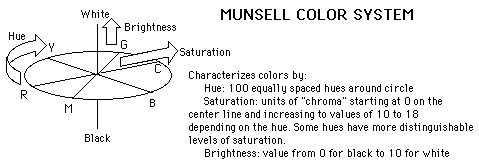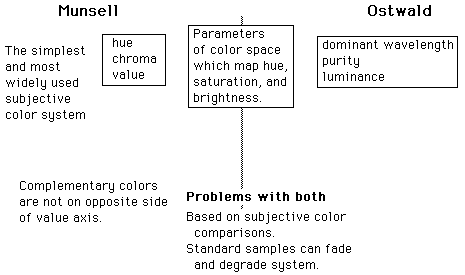
The Munsell and Ostwald color systems match colors to a set of standard samples. The Munsell system divides hue into 100 equal divisions around a color circle. This is similar in approach to the Newton Color Circle except that the circle is distorted by assigning a unit of radial distance to each perceptable difference in saturation (called units of chroma). Since there are more perceptable differences for some hues, the figure will bulge outward to 18 values for some hues compared to only 10 for another. Perpendicular to the plane formed by hue and saturation is the brightness scale divided into a scale of "value" from 0 (black) to 10 (white). A point in the color space so defined is specified by hue, value, and chroma in the form H V/C.
The MUNSELL system is a collection of color samples for comparison, with adjacent samples based upon equal perceived differences in color.
| Newton color circle | Comparison of Munsell and Ostwald systems |
Vision concepts
Color vision
Color measurement
| HyperPhysics***** Light and Vision | R Nave |

